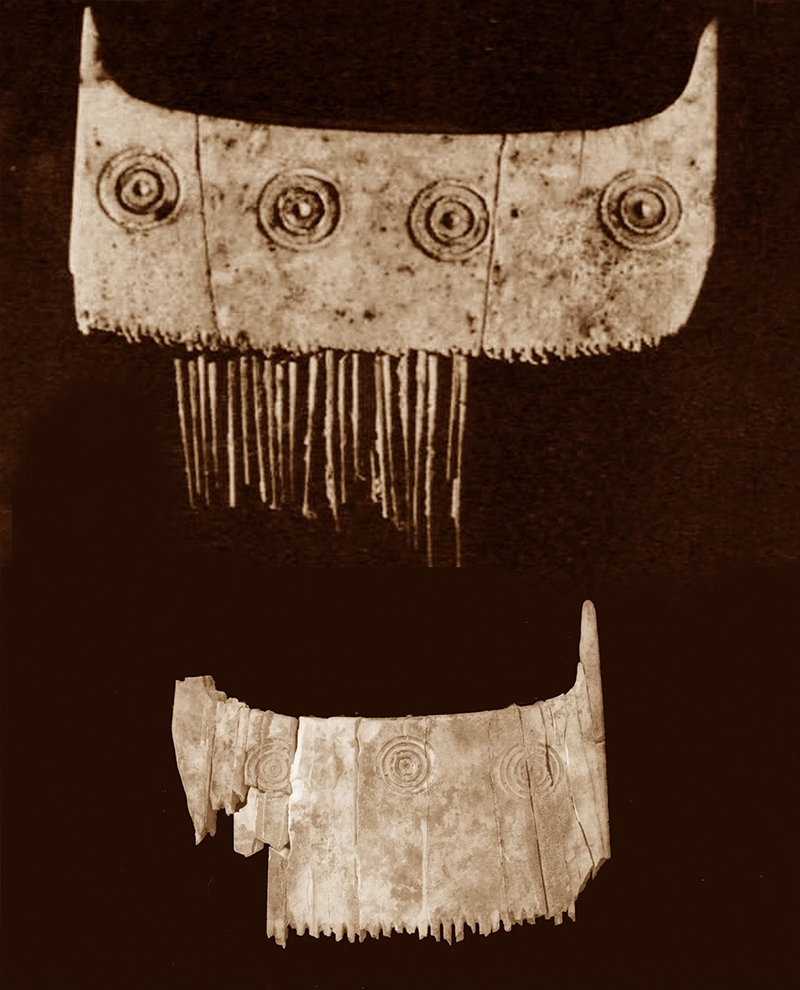Dated to the fourth millennium BCE, the Hakra Ware Culture is a cultural sequence identified by its distinct pottery styles. Situated in the Ghaggar-Hakra river system region in present-day India and Pakistan, the culture is associated with several Indus Valley Civilisation sites and is significant for the insights it provides into settlement patterns and material cultures before the Early Harappan Phase. The culture derives its name from Hakra — the name used in Pakistan for the Ghaggar river which flowed between India and Pakistan and is now a paleochannel.
Hakra Ware sites in Pakistan are concentrated in the Cholistan Desert region, although artefacts have also been found in Jalilpur and Harappa. On the Indian side, Hakra Ware objects have been found in Anupgarh Tehsil, Rajasthan, with similar artefacts found in Early Harappan finds at Kalibangan, Rajasthan, as well as Rakhigarhi, Banawali and Kunal, Haryana. The site of Bhirrana, Haryana, is significant for the discovery of Hakra Ware in an independent stratigraphic layer which predates the Early Harappan Phase.
Hakra Ware refers to wheel-made and handmade pottery categorised on the basis of its surface treatment. The most common categories of Hakra Ware are mud applique ware, incised ware and black slip on red ware. Mud applique ware was frequently seen on thick-bodied vessels and involved coating the external surface with a mixture of mud and pottery bits. Incised ware objects featured a series of lines on the exterior surface. Black slip on red ware refers to pottery coated with a black slip that was burnished for a glossy appearance.
Assemblages in which Hakra Ware artefacts were found also yielded pottery artefacts with other types of surface treatments. In Harappa, where the Hakra Ware phase is likely dated to 3300–2800 BCE, potsherds with pre-firing marks and post-firing graffiti were found, which may represent the formative phase of the Harappan pictographic script. At Jalilpur, tan or chocolate slipped ware, bichrome ware and a few sherds of black burnished ware and brown-on-buff ware were also found at the Hakra level. The bichrome ware, used mainly for vases and bowls, had painted surfaces with geometrical and floral motifs outlined in black and filled in with white pigment.
Other artefacts recovered from the Hakra Ware level included stone and bone tools, terracotta figurines, including animal figures, beads, gold, fragments of copper, coral and semi-precious stones, such as carnelian, jasper and lapis lazuli, necklaces, and shell and terracotta bangles.
Sites where Hakra Ware objects were found were characterised by pit-dwellings. These subterranean spaces had mud-plastered surfaces and, based on the evidence from Bhirrana, also served ritual and industrial purposes. Of the ninety-nine Hakra sites found in the Cholistan region, 52% were recognised as campsites, indicating a shifting population, while 45% were considered to be permanent settlements. While most Hakra Ware sites in the Cholistan region were single-period settlements, multiple levels of occupation at sites such as Harappa and Bhirrana have led scholars to suggest that the Hakra Ware phase may have been a formative period preceding the Early Harappan Phase, indicating a transition into a rural settlement that eventually evolved into urbanised settlement characteristic of the Mature Harappan Phase.







